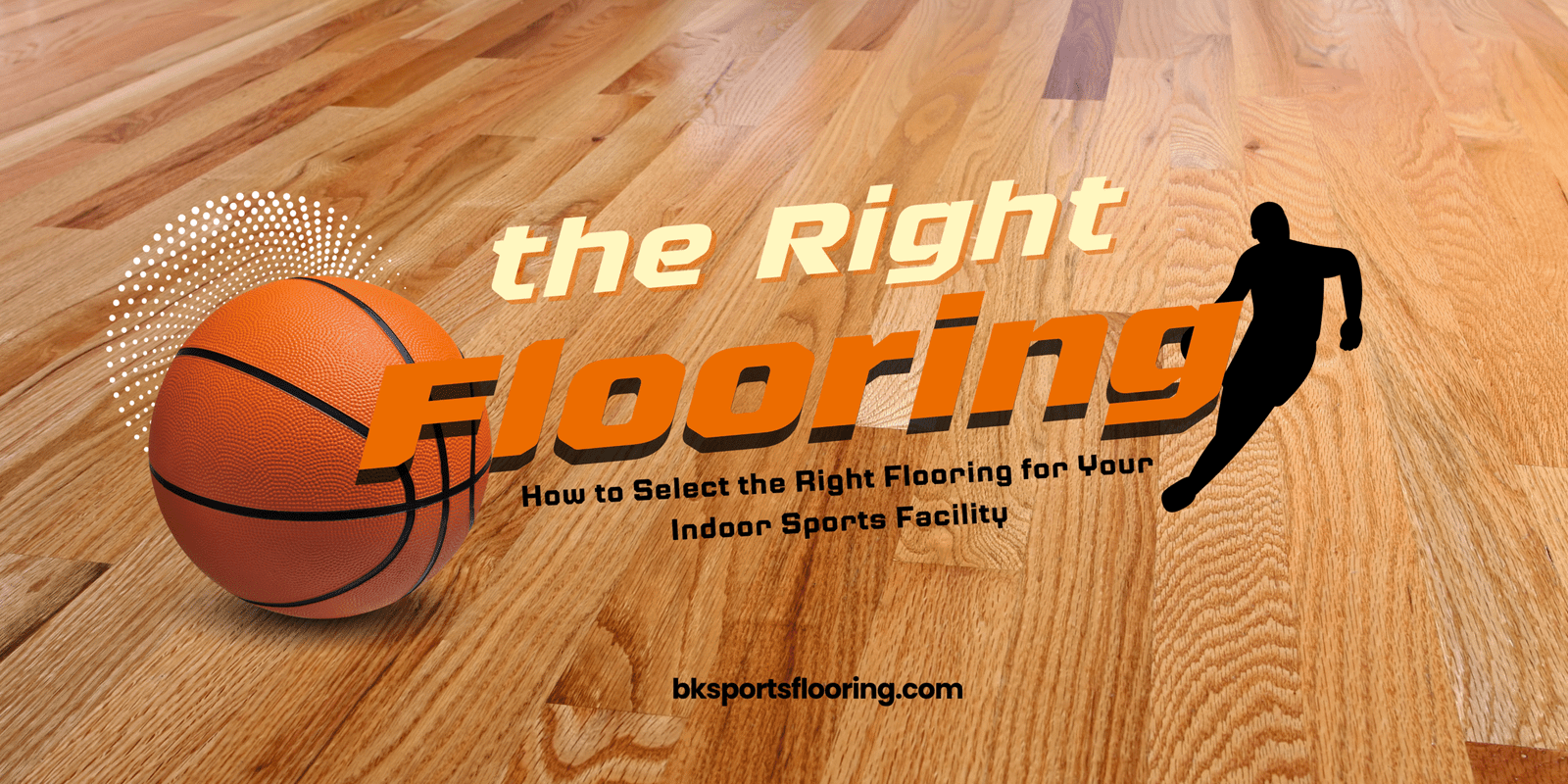At Boker Sports Flooring, we understand the complexities involved in choosing the right flooring solution for your facility. We specialize in premium indoor sports flooring options designed to meet the needs of various athletic activities—from basketball and volleyball to badminton, futsal, and multi-use courts.
In this comprehensive guide, we’ll walk you through the essential factors to consider when selecting flooring for your indoor sports facility and help you make a choice that best suits your budget, usage, and goals.
1. Define the Purpose of Your Sports Facility
Before choosing any flooring system, you need to clearly define the primary purpose of your facility. Ask yourself the following questions:
- What sports will be played here?
- Will the facility be single-use (e.g., a dedicated basketball court) or multi-use?
- Will it also be used for non-sporting events such as assemblies, fitness classes, or community functions?
- How often will the floor be used?
Understanding the usage patterns will help determine the level of durability, shock absorption, and surface performance your indoor sports flooring must offer.
For example:
- A basketball-focused facility might benefit from the aesthetic and performance of hardwood flooring.
- A multipurpose gym or school facility may require vinyl or synthetic indoor sports flooring that can handle a variety of activities.
2. Consider Performance Requirements
Athletic performance is heavily influenced by the characteristics of the flooring. High-quality indoor sports flooring provides adequate traction, shock absorption, and energy return—all of which contribute to a safe and dynamic playing environment.
Here are some critical performance attributes to evaluate:
- Ball bounce – Essential for sports like basketball or handball.
- Slip resistance – Reduces risk of falls; important for fast-paced sports.
- Shock absorption – Helps protect joints and reduces injury risk.
- Vertical deformation – Ensures comfort during jumps and quick movements.
- Surface friction – Maintains balance between grip and glide.
At Boker Sports Flooring, we offer advanced flooring systems that are engineered with these performance standards in mind, helping your athletes train and compete at their best.
3. Choose Between Flooring Materials
There are several types of materials used in indoor sports flooring, each with its own pros and cons. Here’s a breakdown of the most common options:
A. Hardwood Flooring
Hardwood, especially maple, is the traditional choice for sports like basketball and volleyball. It offers excellent ball bounce and a visually striking appearance. However, it requires consistent maintenance and is vulnerable to moisture.
Pros:
- Professional look and feel
- Excellent for competitive basketball
- Long lifespan with proper care
Cons:
- Expensive to install
- High maintenance requirements
- Sensitive to humidity
B. Vinyl Sports Flooring
Vinyl flooring, such as the kind provided by Boker Sports Flooring, is one of the most versatile options available today. It’s ideal for multipurpose spaces and offers outstanding durability, comfort, and low maintenance.
Pros:
- Highly durable and impact-resistant
- Low maintenance and easy to clean
- Available in a wide variety of designs and colors
- Great for multipurpose usage
Cons:
- Slightly less bounce compared to hardwood
- Can be less appealing for high-end professional courts
C. Rubber Flooring
Rubber flooring is often used in gyms and weight training areas. It offers strong impact absorption and slip resistance, making it great for areas where heavy equipment is present.
Pros:
- Excellent shock absorption
- Non-slip and water-resistant
- Ideal for fitness and training zones
Cons:
- Not ideal for ball sports
- Limited aesthetic options
D. Polyurethane Sports Flooring
This type of flooring is poured in place and creates a seamless, cushioned surface. It’s ideal for multipurpose athletic spaces and schools.
Pros:
- Seamless and hygienic
- Durable and flexible
- Good shock absorption
Cons:
- Requires professional installation
- Can be more expensive than vinyl
4. Evaluate Safety and Comfort
The safety of your athletes should be at the forefront of your flooring decision. Good indoor sports flooring should minimize the risk of injuries by offering proper shock absorption, joint protection, and anti-slip properties.
Boker Sports Flooring offers flooring systems that are not only performance-driven but also safety-focused. Our solutions are designed to reduce impact forces during jumping and running, helping to prevent common injuries such as shin splints, knee strain, and sprains.
Additionally, consider the age group of your users. Younger athletes and children may require softer, more cushioned surfaces, whereas professional athletes may prefer firmer flooring for performance.
5. Think About Maintenance Requirements
Your choice in flooring should also be guided by the level of upkeep you’re willing to commit to. Hardwood floors require regular sweeping, cleaning, and refinishing every few years, which can be expensive and time-consuming.
On the other hand, vinyl indoor sports flooring is low maintenance and easy to clean, making it an attractive option for facilities that host a variety of events or have limited janitorial support. At Boker Sports Flooring, we offer guidance on proper maintenance routines that can extend the life of your floor, regardless of the material you choose.
6. Assess Durability and Lifespan
Flooring durability depends on material quality, construction, usage frequency, and maintenance. You want your investment to last without constant repairs or performance degradation.
Here’s how common options stack up:
- Hardwood: 30-40 years with regular refinishing
- Vinyl: 15-25 years with minimal maintenance
- Rubber: 10-20 years
- Polyurethane: 20+ years
Boker Sports Flooring uses premium materials and construction techniques to ensure your indoor sports flooring delivers a long service life even under the most demanding usage.
7. Factor in Budget and Installation Costs
Your budget will ultimately shape your flooring choice. Costs vary not just by material but also by installation, subfloor preparation, and any additional features like game lines or custom graphics.
Initial Costs Breakdown (Estimate):
- Hardwood: High
- Vinyl: Moderate
- Rubber: Moderate to high
- Polyurethane: High
While hardwood may offer a professional look, vinyl indoor sports flooring offers exceptional value by balancing performance, durability, and cost-effectiveness—especially when provided by industry leaders like Boker Sports Flooring.
Remember to also factor in the cost of downtime for installation and future refinishing, especially for wood floors.
8. Customization and Branding Options
Today’s indoor sports flooring is more than just a playing surface—it’s a branding opportunity. From custom logos and school mascots to branded game lines, modern flooring systems can be personalized to reflect your facility’s identity.
Boker Sports Flooring offers custom design options to help your space stand out. Whether you’re outfitting a school gymnasium or a professional training center, we can help you create a visually striking, on-brand sports environment.
9. Environmental Conditions and Location
Environmental factors such as humidity, temperature variation, and even altitude can affect flooring performance and longevity.
- Hardwood floors may expand or contract in humid climates.
- Vinyl floors, such as those from Boker Sports Flooring, are more resistant to climate changes and provide better moisture resistance.
- Rubber and polyurethane floors are also resilient in changing conditions.
If your facility is located in a region with wide seasonal temperature swings, climate control and moisture-resistant flooring become even more important.
10. Consult with Flooring Experts
Finally, don’t make the decision in isolation. Flooring specialists can offer insights you may not have considered, including recommendations based on your specific needs, space size, budget, and usage expectations.
At Boker Sports Flooring, we provide expert consultation to help you assess your facility and choose the right solution. Our team evaluates everything—from subfloor preparation to expected foot traffic—to deliver a flooring solution that meets and exceeds your expectations.
Conclusion
Choosing the right indoor sports flooring for your facility is a significant decision—one that impacts safety, performance, and the user experience for years to come. From defining your primary sports use to evaluating material durability and budget constraints, every factor plays a role in selecting the best floor for your needs.
With a wide range of high-performance flooring options, customization capabilities, and expert support, Boker Sports Flooring is your go-to partner for all things related to indoor sports flooring. Whether you’re building a basketball court, a multipurpose athletic space, or a school gym, we’ll help you select and install the ideal solution tailored specifically to your needs.
Ready to upgrade your facility? Contact Boker Sports Flooring today to get started on selecting the perfect indoor sports flooring for your venue.



